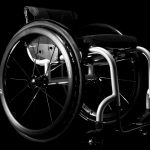[grwebform url=”https://app.getresponse.com/view_webform_v2.js?u=zZ4xV&webforms_id=18433203″ css=”on” center=”off” center_margin=”200″/]
Recent research has held out hope of improving the quality of life for people with a SCI by using a wearable electronic stimulator to restore significant bladder function. The UCLA research entitled: “The non-invasive Neuromodulation of spinal cord restores lower urinary tract function after paralysis” was published in June this year.
It is well known that a SCI causes problem with the body’s capability to store and release urine. It is hoped that this new research will ultimately result in a relatively inexpensive and wearable device that will allow SCI patients to fill their bladders without risk of leaking. And, then be able to urinate on demand without requiring a catheter.
Electrical stimulation above the spinal cord
The lower urinary tract (LUT) in the body controls the storage of urine (without leaking in the bladder) as well as its timely emptying, without any liquid retention. Nerves that support bladder contraction and voiding carry commands to the LUT. Normally, all these functions are coordinated in the brain stem. But, with a SCI this coordination is disrupted because the brain stem and LUT cannot communicate properly. This can lead to health problems such as bladder and kidney injury if not dealt with properly.
The new technique, which is called TESSLA (Transcutaneous Electrical Spinal Stimulation for LUT functional Augmentation), has been shown to restore bladder control by applying electrical stimulation at a location on the surface of the skin above the spinal cord.
Improved quality of life for those with a SCI
From the testing carried out so far, at a low frequency (1 Hz) electrical stimulation will be needed for between 60 and 120 seconds to initiate voiding of the bladder. It also results in improved voiding efficiency, increased rate of urine flow, decreased residual volume and improved coordination between the bladder and sphincter.
For a higher frequency (30 Hz) it was found that TESSLA provided increased bladder capacity allowing the patient to hold larger quantities of urine in their bladder. This will lead to fewer incontinence problems, a longer time between voids and a better quality of life.
At the same time as this study has taken place, another at the UCLA used a magnetic device placed on the lumbar spine. This study enabled SCI participants to regain the ability to urinate, one of them was even able to stop using a catheter completely during the test and for 4 weeks afterwards.
Although it is only early days for both studies, they hold out the hope of allowing SCI patients to regain full bladder control in the future, which can only be good news.






Recent Comments